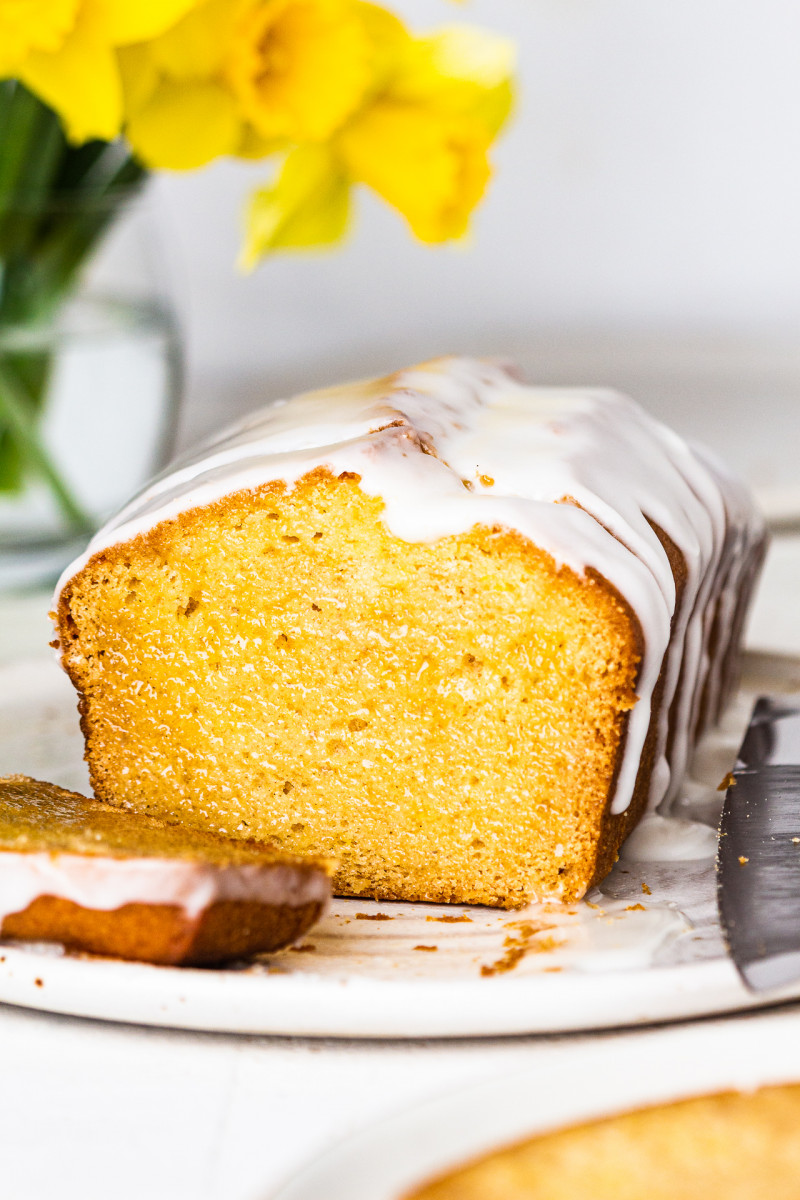
Hope the sunshine is gracing your corner of the world this week. It’s almost like magic to lift your mood, isn’t it? I find a slice of good cake along with your afternoon coffee seems to have magical powers. This sunny-looking vegan lemon cake is just what the doctor ordered. It has few easily accessible ingredients, comes together in a single mixing bowl and requires very little skill.
This recipe is based on my previous recipe for Vegan Lemon Drizzle Cake that many of you love. This time I wanted to make a nut free lemon cake and I also wanted to make it a bit longer so I adjusted the amount of ingredients accordingly. This cake is soft and fluffy, flavored with lemon zest and drizzled with a generous amount of tangy lemon sorbet. If you’re feeling extra fancy or just want the whole look, finish the cake with a thin layer of lemon icing and let it drip around artistically.
More about ingredients
Plant Milk: I used soy milk to make this cake, but if you don’t have soy, any other neutral flavored plant milk will do. I made curd by mixing it with lemon juice and so made a vegan equivalent of buttercream, which helped this cake rise.
Lemon Flavor: The lemon flavor in lemon cakes in general comes from the zest and any lemon flavored icing/syrup you add after baking. I used a lot of lemon zest here to make this cake very fragrant, but feel free to add up to 2 lemons if you like.
Lemon juice: Lemon juice is used in cake batter not for flavor but to help rise – unfortunately the tangy flavor of lemon juice is lost during the baking process. To compensate and give this cake the level of tanginess it deserves, I used a generous amount of lemon juice to make a simple lemon syrup, which is used to add lemon flavor to the cake. I also added a touch of icing, which works to counteract the sweetness of the icing sugar a bit.
Flour: I used widely available white flour (known as all purpose in the US) to make this cake. If you want to make it gluten-free, use a balanced gluten-free flour mixture and a touch of xanthan gum to improve the texture.
Yellow: In a traditional, non-vegan recipe, it’s best to add a small amount of turmeric for the warm yellow color that comes from egg yolks. I find it’s not really necessary when used with olive oil and any other oil, just add a smidge, it’s surprisingly strong as it literally sits on the tip of a knife.
Oil: This case is very easy to make as it uses regular vegetable oil. There are several vegetable oils you can use, I recommend something neutral in flavor like grapeseed oil, or if you want something a little bolder, light olive oil works too. I would avoid extra virgin olive oil though as it overpowers the delicate balance of flavors. I’ve tried making this cake with unscented coconut oil, creaming both sugar and cold oil, and using melted coconut oil and both work well, but the texture of the cake is slightly thicker, less fluffy and springy. The fact is that coconut oil solidifies at low temperatures.
Casting Sugar: Caster sugar (also known as superfine sugar) is great for baking and is what I used both to make cakes and syrups.
Xanthan gum A small amount of xanthan gum is used to improve the texture of the cake (only if you use a gluten-free flour blend instead of plain gluten flour). If you have a well-formed gluten-free flour mix that has a high proportion of starch, you can skip it, but it does make a difference so use it if you can.
Baking Agent: I used carefully calibrated amounts of baking powder and baking soda to rise this cake. The latter reacts with the lemon juice in the buttermilk and keeps the cake nice and fluffy.
Dry Sugar: Icing sugar (known as confectioner’s sugar in the US) is used to make icing. To achieve the right consistency of icing, you’ll need surprisingly little liquid so be sure to add it very slowly.
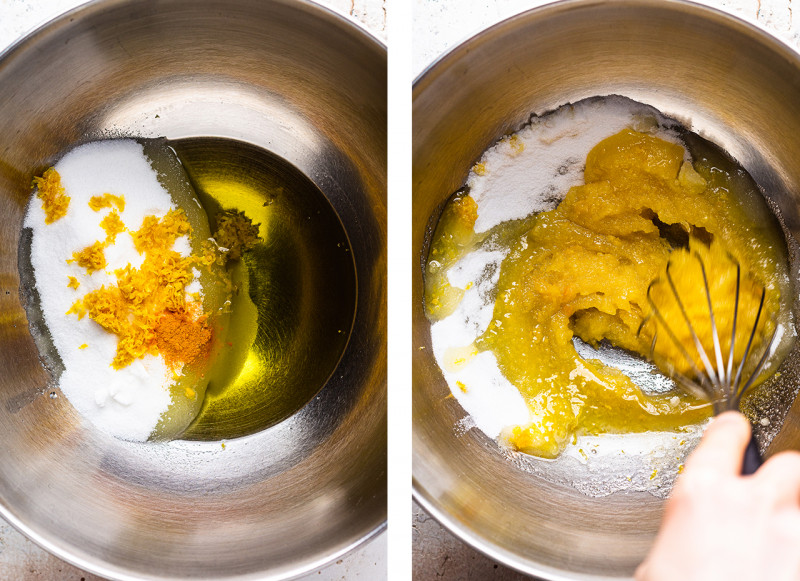
In a large mixing bowl, place the oil, sugar, lemon zest and a small amount of turmeric if using – I found it completely unnecessary if using olive oil. Whisk with a wire until well mixed. If coconut oil is used, melt and cool it before using, otherwise it will dissolve the sugar.
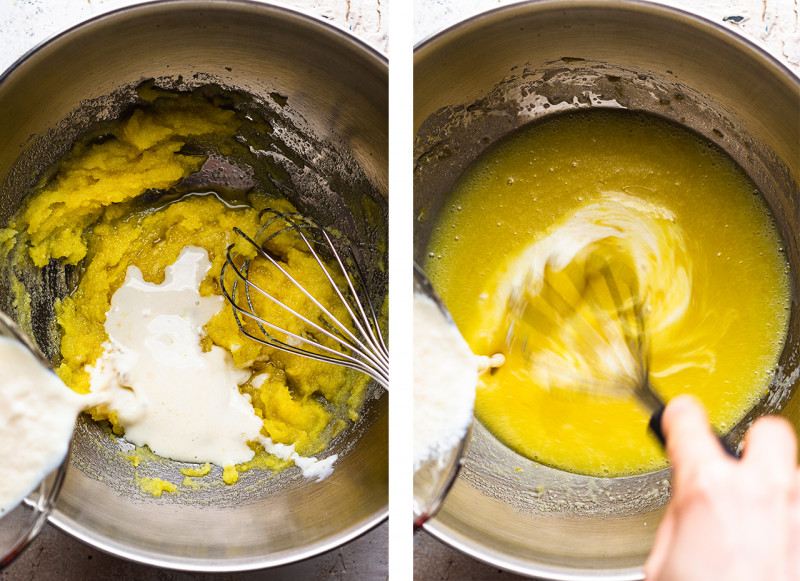
Add Vegan Buttermilk – Combine soy (or other plant) milk and lemon together and stir until you get a homogeneous mixture.
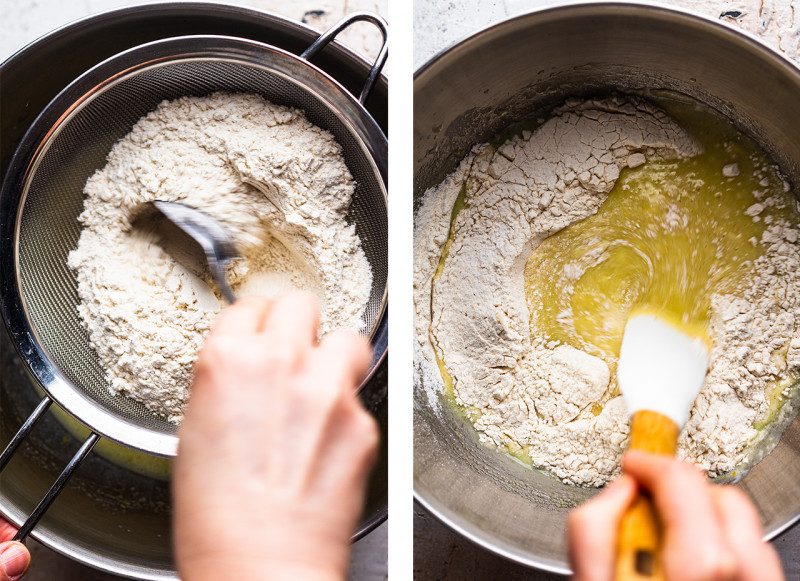
Place a sieve over the bowl with the wet ingredients and slowly sift in the dry ingredients – I like to do this in 2-3 batches. Switch to a spatula and add the flour to the wet ingredients, gradually incorporating more and more flour by making small circles in the center of the bowl.
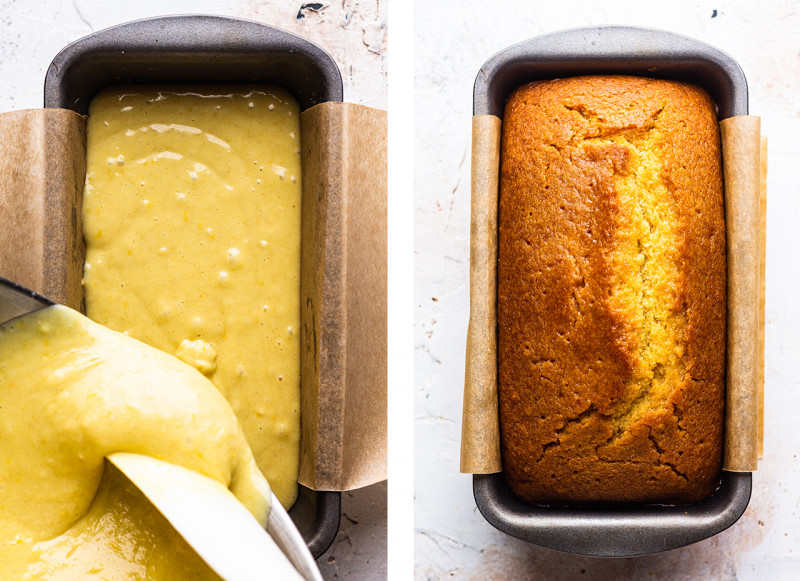
Transfer the batter – it will be pourable – to a greased and lined baking tin and bake in the preheated oven until fully risen, golden brown and a skewer inserted into the center comes out clean. Poke small holes all over the cake and drizzle hot cake with cooled syrup or vice versa.
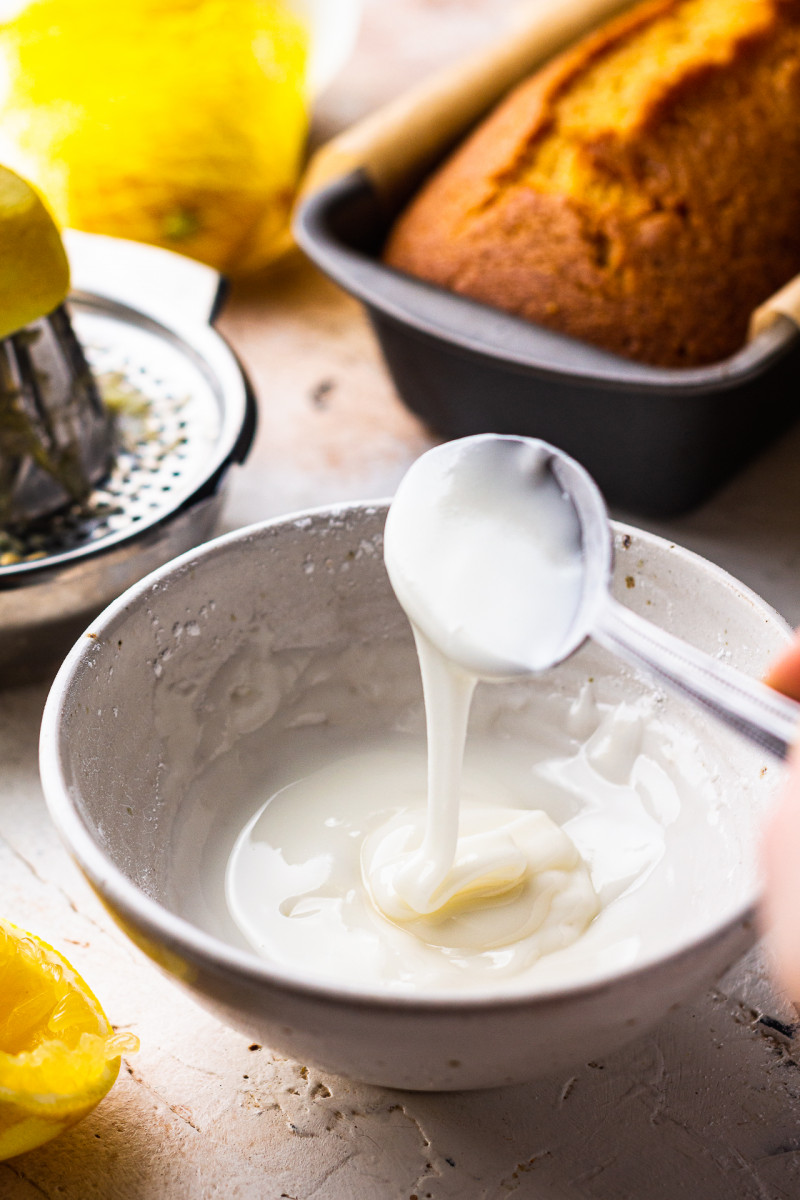
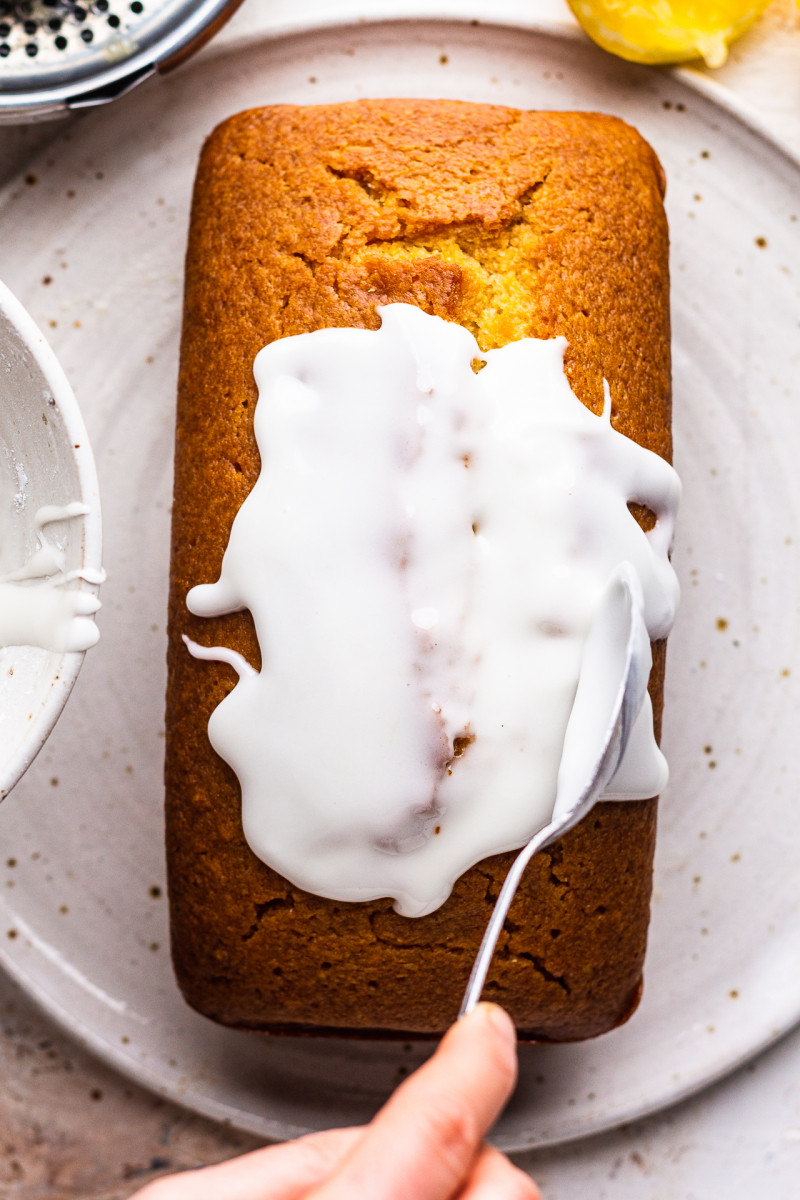
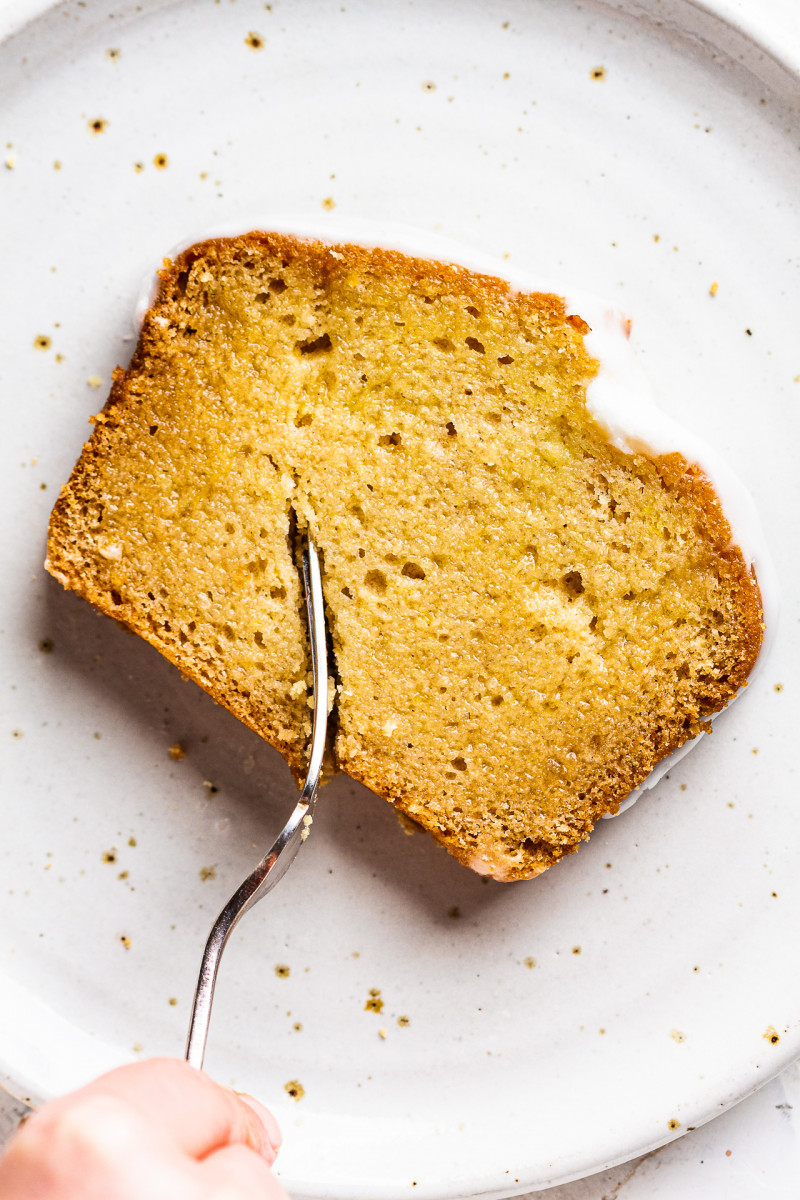
- 70 g / 1/3 cup caster sugar (fine sugar)
- 90 ml / 6 tbsp lemon juice
Wet ingredients
- 320 ml / 1 + 1/3 cup plant milk
- 45 ml / 3 tbsp lemon juice
- 100 g / ½ cup neutral oil, such as grapeseed oil*
- 200 g / 1 cup caster sugar
- 2-3 lemons
dry ingredients
- A smidge of turmeric, for color (optional)
- 280 g / 2¼ cups plain flour or GF flour mix
- 1 teaspoon of baking soda
- 1 teaspoon baking powder
- ½ teaspoon xanthan gum (GF version only), optional
ICING (optional)
- 50 g / 1/3 cup icing sugar
- 12 ml / 2½ teaspoons lemon juice
method
Lemon syrup
- Place the sugar and lemon juice in a small saucepan, simmer over low heat until the sugar is completely dissolved. Set aside – use cold syrup on hot cake or vice versa.
Lemon cake
- Preheat the oven to 180° C (or 160° C fan forced) / 355° F (320° F fan forced). Line a 1 kg / 2 lb cake tin with a wide sheet of baking paper so that your cake can be easily removed.
- Combine plant milk and lemon juice together, let it stand for 10 minutes.
- Whisk the oil and sugar together in a large bowl with a whisk, then add the curdled plant milk. Add lemon juice and turmeric if using.
- Place a sieve into the bowl with the wet ingredients and sift through all the dry ingredients in 2-3 batches.
- Stir the flour into the wet ingredients making small circles in the center of the bowl, gradually incorporating more and more flour.
- Transfer the batter to the prepared baking tin.
- Bake until the top is nicely browned and a toothpick inserted into the center of the cake comes out clean, about 45 minutes but each oven is slightly different so check.
- Once baked, remove the cake from the tin. Pierce the top in several places with a toothpick so that the syrup covers the cake better. Brush the surface of the warm cake (this is important because otherwise the syrup will stay on the surface) with the cold syrup a few times allowing the syrup to soak into the cake between each application.
- Once cooled, drizzle with icing starting in the center so that it drips down the sides to create beautiful drizzle marks.
ICING (optional)
- In a medium bowl, whisk the icing sugar and lemon juice until completely combined. Add lemon juice slowly to avoid lumps in your icing.
Comment
This recipe is based on my previous recipe for Vegan Lemon Drizzle Cake, but made to avoid nuts.
Nutritional information
*1 out of every 16 slices (without icing)

